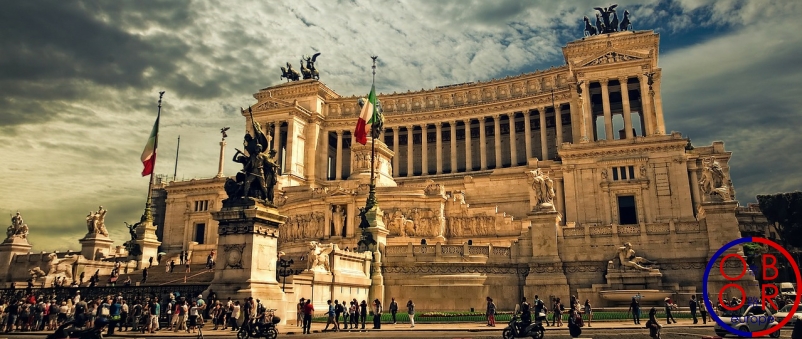
Italy and China have finally signed a cooperation agreement on the “Belt and Road” initiative. Announced for several months, this agreement was finally signed by President Xi Jinping and Prime Minister Giuseppe Conte on March 23, 2019.
The United States warned Rome about this new partnership, which they say would favor Chinese influence in Europe. For Rome, the objective of this agreement is to appear as the main destination of the maritime Silk routes in Europe
Sectors of cooperation
But what is this memorandum of understanding? Italy is not the first European Union member states to have signed this type of agreement with China. Greece, Portugal, but also Latvia, Croatia, Bulgaria and others have already signed a MoU with China.
This memorandum lists the sectors in which China and Italy could strengthen their cooperation. This cooperation could take the form of joint development policies, for example through the financing of projects by the AIIB.
Another aspect regards of course the construction of infrastructures in particular transportations. Rome expects a lot from this agreement to modernize Italian infrastructure.
The MoU also mentions trade and finance as possible sectors of cooperation. Italy suffers from a strong trade deficit with China and therefore hopes to reverse the trend through this new agreement.
Rome and Beijing also pledge to strengthen their cultural and scientific exchanges and to work together to promote sustainable development in order to achieve the objectives of the 2030 Agenda for sustainable development and the Paris Agreement on Climate Change.
This memorandum also offers Italy the opportunity to cooperate with China on projects in third countries that also involved in the “Belt and Road initiative”.
An agreement that goes against European interests and values?
It is very interesting to note that this agreement between China and Italy is not against the European integration policy.
On the contrary, this document mentions the Europe-Asia connectivity strategy. Rome and Beijing commit to developing synergies between the “Belt and Road initiative” and the European infrastructure plan.
On the other hand, by this agreement, the parties undertake to promote transparency and carry out projects that comply with tendering procedures, and thus comply with European standards.
While this agreement is ambitious, it must be noted that it is not very binding; it does not include obligations for signatories. It should not be seen as an end in itself, but rather as the beginning of a possible Italian participation in the new Silk Roads. This cooperation remains to be built
Other agreements
Other agreements were signed during President Xi Jinping’s visit to Italy, particularly in the areas of culture, sport, energy, finance and infrastructure.
These agreements will strengthen the attractiveness of Italy and Italian companies in the Chinese market, particularly through the forthcoming issuance of “Panda bonds” that would finance Italian companies by Chinese investors.
Furthermore, Genoa and Trieste ports have signed cooperation agreements with China Communications Construction Company.
But these agreements must be tempered. While some have immediate consequences, others are only about possible future cooperation. In view of the anticipated investment, negotiations will take time.
The Memorandum of Understanding between China and Italy is therefore a first step towards the integration of Italy into the “Belt and Road” initiative, and is not opposed to the European project. On the contrary, for Sino-Italian cooperation to work, China and the entire European Union will have to continue to cooperate, as Chinese Foreign Minister Wang Yi stated in early March.

Pingback:Tra Cina e Russia: soft power, donazioni, paranoie e real politik - ilSole24ORE